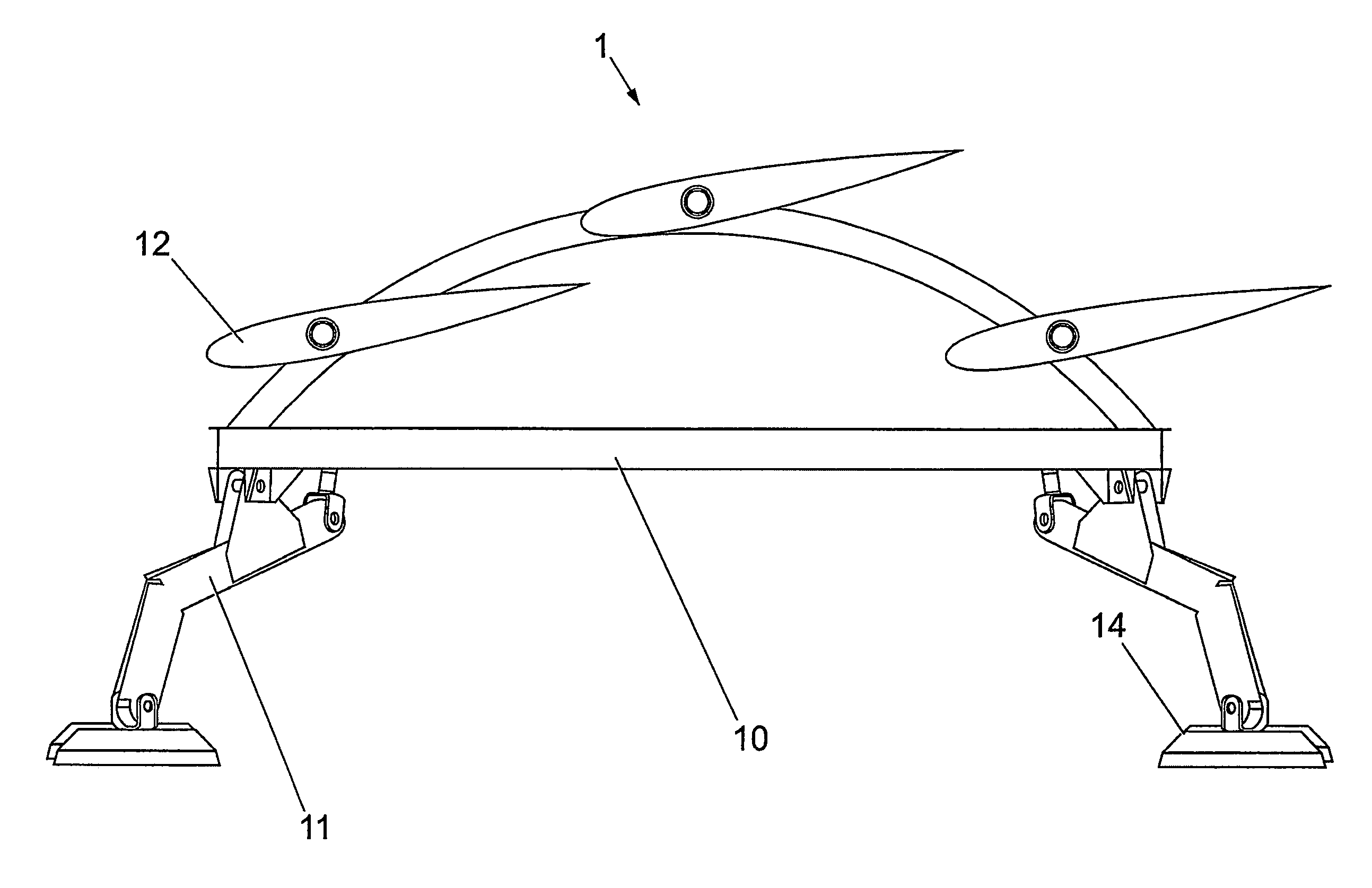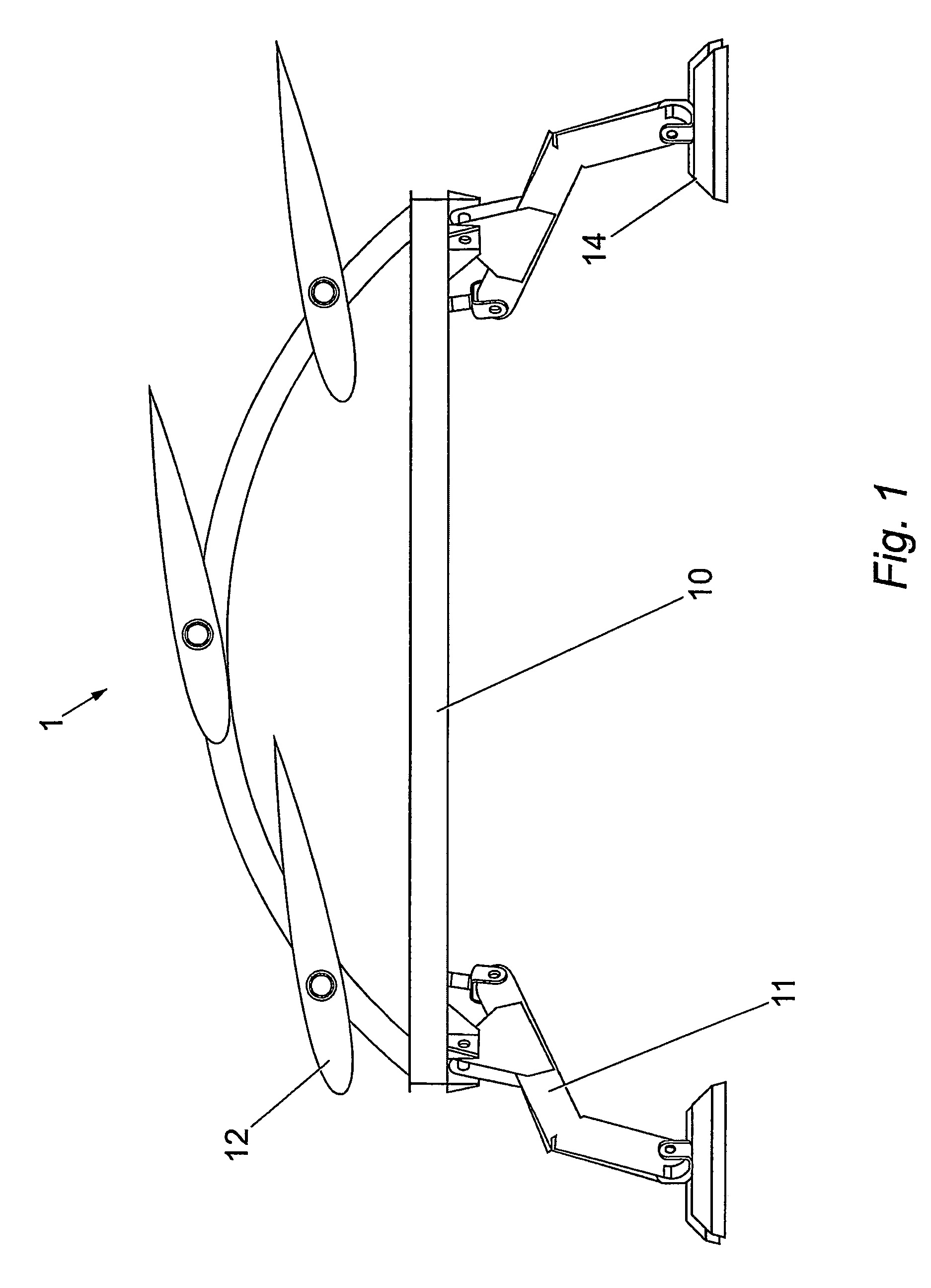Apparatus for controlling underwater based equipment
a technology of underwater equipment and apparatus, which is applied in the direction of sea energy generation, water power plants, tidal stream/damless hydropower, etc., can solve the problems of affecting the safety of underwater operations, the risk of collision damage to fish and marine mammals, and the unlikely ever-intentional pursuit of new tidal barrage systems
- Summary
- Abstract
- Description
- Claims
- Application Information
AI Technical Summary
Benefits of technology
Problems solved by technology
Method used
Image
Examples
first embodiment
[0067]According to the present invention, the apparatus for launching an underwater device from a vessel, securing the underwater device whilst in operation on the seabed and permitting recovery to a vessel, for maintenance and repair should be as simple as possible without involving any sophisticated and specialised equipment. the invention is shown in FIG. 1 and utilises passive, self-rectifying static hydrofoils, the central shaft (see FIG. 3) of which can be rotated through 180° to generate positive or negative lift as required.
[0068]As is shown in FIG. 1, the apparatus 1 for controlling the launch, secure positioning and recovery of an underwater device comprises a space frame 10 for attaching to any desired underwater device such as power extraction equipment which may comprise a tidal turbine (not shown), a hydrofoil support frame to accommodate the self rectifying hydrofoil mechanisms 12 and hydraulically operated legs 11 for levelling of the apparatus 1. The feet 14 are equ...
second embodiment
[0083]an apparatus in accordance with the present invention is shown in FIGS. 5a-5d. The apparatus 100 comprises a tripod support frame 110, a bottom ring or stand 126, a disc-shaped hydrofoil 112, support brackets 120 and an attachment ring 122 with bolts 123. The apparatus 100 is attached to an ADCP canister 124 via the attachment ring 122 and bolts 123. Other subsea equipment may also be attached to the apparatus 100 in place of the canister 124.
[0084]The hydrofoil 112 is rigidly connected to the frame 110 via the support brackets 120 and its plane is generally parallel to the main plane defined by the bottom ring 126 such that the hydrofoil 122 will be generally parallel to the seabed in use. A central aperture 119 is provided within the hydrofoil 112. A lower face 113 of the hydrofoil 112 faces the stand 126 and is of a generally flat surface, whereas its opposite, upper, face 115 faces away from the stand 126 and gradually curves upwards away from the main plane of the hydrofo...
PUM
 Login to View More
Login to View More Abstract
Description
Claims
Application Information
 Login to View More
Login to View More - R&D
- Intellectual Property
- Life Sciences
- Materials
- Tech Scout
- Unparalleled Data Quality
- Higher Quality Content
- 60% Fewer Hallucinations
Browse by: Latest US Patents, China's latest patents, Technical Efficacy Thesaurus, Application Domain, Technology Topic, Popular Technical Reports.
© 2025 PatSnap. All rights reserved.Legal|Privacy policy|Modern Slavery Act Transparency Statement|Sitemap|About US| Contact US: help@patsnap.com



